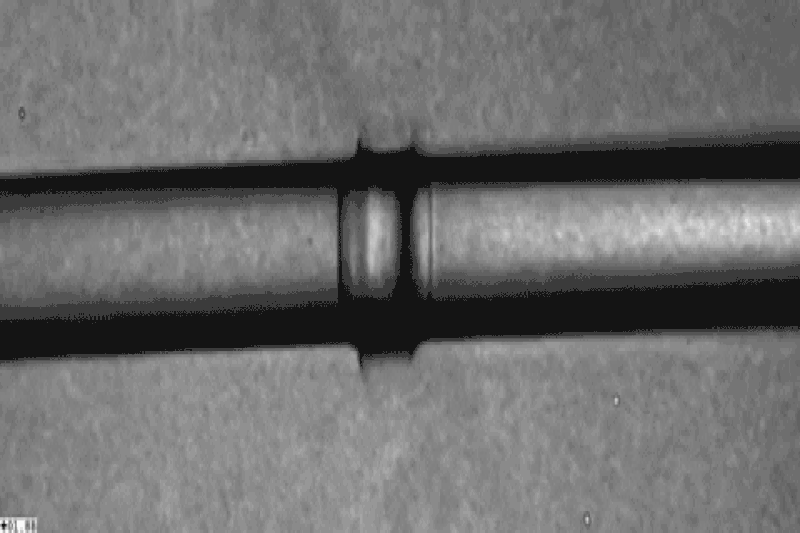
Scientists used X-ray lasers to create a sound so loud that it vaporized water on contact. (Courtesy of Claudiu Stan/ SLAC National Accelerator Laboratory)
Scientists have discovered what they believe is the loudest possible underwater sound — a sound so powerful that it can vaporize water on contact.
It's not the sound of a massive underwater earthquake, nor is it the sound of a pistol shrimp snapping its claws louder than a Pink Floyd concert. It is, in fact, the sound of a tiny water jet — about half the width of a human hair — being hit by an even thinner X-ray laser.
You can't actually hear this sound, because it was created in a vacuum chamber. That's probably for the best, considering that, at around 270 decibels, these rumbling pressure waves are even louder than NASA's loudest-ever rocket launch (which measured about 205 decibels ). However, you can see the sound's microscopically devastating effects in action, thanks to a series of ultra-slow-motion videos recorded at the SLAC National Accelerator Laboratory in Menlo Park, California, as part of a new study. [Tiny Grandeur: Stunning Photos of the Very Small]
In the video above, which was filmed in about 40 nanoseconds (40 billionths of a second ), the pulsing laser immediately splits the water jet in two, vaporizing the fluid that it touches while sending powerful pressure waves wobbling down either side of the jet. These waves create more waves and, by about 10 nanoseconds in, fizzing black clouds of collapsing bubbles form on each side of the cavity.
More From LiveScience
According to Claudiu Stan, a physicist at Rutgers University in Newark, New Jersey, and one of the study co-authors, these pressure waves likely represent the loudest possible underwater sound. If it were any louder, the sound "would actually boil the liquid," Stan told Live Science — and once the water boils, the sound has no medium to pass through.
Why try to discover a sound that rends apart its own medium? According to Stan, understanding the limits of underwater sound could help researchers design future experiments.
Scientists regularly suspend little bits of intriguing matter — say, a specific type of protein crystal, for example — in fluid jets and blast them with lasers to determine their chemical properties. If scientists know precisely how intense a laser pulse can be without accidentally destroying the liquid, that could improve the way these experiments are performed, Stan said. That’s particularly true for studies where scientists hit samples of material with high-powered beams to test the material’s structural integrity.
"This research can help us investigate in the future how microscopic samples would respond when they are vibrated severely by underwater sound," Stan said.
This is not the first time SLAC researchers have used this X-ray laser to test the limits of physics. In a 2017 study, researchers used the same laser to blast the electrons out of an atom, creating a "molecular black hole" that sucked in all the available electrons from nearby atoms. Taken in tandem, that study and the new one result in one unassailable conclusion: Lasers are really, really cool.
The new study was published April 10 in the journal Physical Review Fluids.
- Dissecting Decibels: The Loudest Animals (Infographic)
- The Mysterious Physics of 7 Everyday Things
- Gallery of Wonders: The Weirdest World Records
Originally published on Live Science.




















